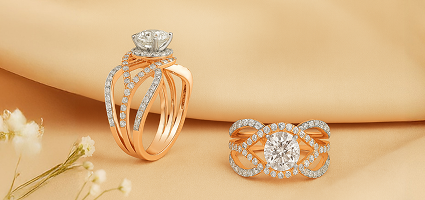Choosing Lab Diamond Rings with Claws
Lab-grown diamonds are revolutionizing the jewelry industry, offering consumers ethical, sustainable alternatives to mined diamonds. When it comes to selecting a lab diamond ring, the choice of setting plays a crucial role in both aesthetics and practicality. Among the various setting options available, claw settings stand out for their ability to accentuate the brilliance of the diamond while ensuring security and durability.
Understanding Claws in Ring Settings
In the realm of jewelry, “claws” refer to the tiny metal prongs that hold the diamond or gemstone securely in place within the ring setting. Also known as prongs lab diamond rings claws, these claw-like structures are essential not only for securing the stone but also for allowing maximum light exposure to enhance its sparkle.
Types of Claw Settings for Lab Diamond Rings
Prong Settings
Prong settings are the most common and versatile choice for lab diamond rings. They consist of small metal claws that grip the diamond at various points, typically four or six. Four-prong settings offer a balance between security and visibility, while six-prong settings provide added stability, making them ideal for larger diamonds.
V-Prong Settings
V-prong settings are a variation of the traditional prong setting, where the prongs are shaped like a V. This design minimizes the amount of metal covering the diamond, allowing more light to enter and enhancing its brilliance.
Double-Claw or Split-Prong Settings
Double-claw settings feature two prongs positioned opposite each other, providing additional security and highlighting the diamond’s shape. They offer a modern twist to traditional prong settings and are popular for fancy-shaped diamonds.
Advantages of Different Claw Types
Choosing the right claw type for your lab diamond ring depends on factors like security, aesthetics, and maintenance.
Security and Stability
Claw settings securely hold the diamond in place, reducing the risk of it coming loose or falling out. The number and design of the claws determine how well the diamond is protected while allowing light to enter from multiple angles.
Visual Impact and Light Performance
Well-designed claw settings maximize the diamond’s brilliance by allowing light to pass through the stone from all sides. This enhances its sparkle and fire, making it appear more radiant and eye-catching.
Choosing the Right Claw Setting
When selecting a claw setting for your lab diamond ring, consider factors such as the diamond’s shape and size, your lifestyle, and how often you’ll wear the ring. Four-prong settings are ideal for round and princess-cut diamonds, while six-prong settings offer added security for larger stones.
Popular Designs and Styles
From classic solitaire settings to intricate halo designs, lab diamond rings with claw settings come in various styles to suit different preferences. Solitaire rings feature a single diamond held by delicate prongs, emphasizing the stone’s brilliance. Halo settings surround the center diamond with a halo of smaller stones, secured by claw prongs for a dazzling effect.
Customization Options
Personalizing your lab diamond ring with claw settings allows you to create a unique piece of jewelry. You can choose the number of prongs, the metal color, and even incorporate intricate designs to reflect your personal style and preferences.
Care and Maintenance of Claw Settings
To ensure your lab diamond ring remains in pristine condition, regular care and maintenance are essential. Clean your ring regularly using a mild soap solution and a soft brush to remove dirt and debris that can accumulate around the claws. Inspect the prongs periodically for any signs of wear or damage, and have them professionally checked and tightened if necessary.
Cost Considerations
Lab-grown diamonds offer excellent value compared to traditional mined diamonds, often costing significantly less without compromising on quality or beauty. The price of a lab diamond ring with claw settings can vary depending on factors such as the size and quality of the diamond, the type of metal used, and the complexity of the design.
Ethical and Environmental Benefits of Lab Diamonds
Opting for a lab diamond ring with claw settings supports ethical and sustainable practices in the jewelry industry. Lab-grown diamonds are produced using advanced technology in controlled environments, eliminating the environmental and ethical concerns associated with diamond mining.
Lab grown diamonds, also known as synthetic diamonds or cultured diamonds, are created through advanced technological processes that simulate the natural conditions under which diamonds form in the Earth’s mantle.
Common Misconceptions About Lab Diamonds
Despite their growing popularity, lab-grown diamonds still face misconceptions regarding their quality, durability, and resale value. In reality, lab diamonds are chemically and optically identical to mined diamonds, offering the same level of brilliance and durability. They also hold their value over time, making them a wise investment.
Conclusion
Choosing a lab diamond ring with claw settings combines beauty, durability, and ethical responsibility. Whether you opt for a classic solitaire or a modern halo design, the right claw setting will enhance your diamond’s brilliance while securely showcasing its beauty for years to come. Embrace the elegance and sustainability of lab-grown diamonds, knowing that your choice reflects both personal style and global responsibility in the jewelry industry.














